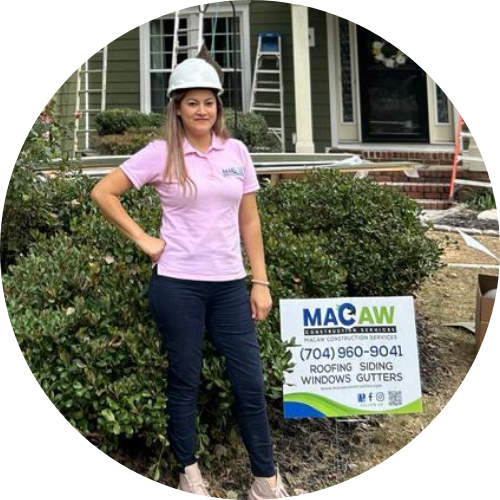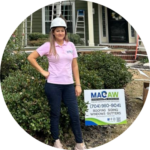Key Takeaways:
Durability and Low Maintenance: Board and batten siding is known for its durability and low maintenance. Made from weather-resistant woods like cedar, redwood, or treated pine, this siding type can last over 50 years with minimal upkeep.
Energy Efficiency and Weather Resistance: The vertical orientation and overlapping design of board and batten siding enhance energy efficiency and weather resistance.
Aesthetic Versatility and Value Addition: Board and batten siding offers a timeless, rustic appearance that complements various home styles such as farmhouses, cottages, and cabins.
Board and batten siding, a traditional exterior siding type, is a popular choice for rustic dwellings and barns. This style, dating back to medieval Europe, consists of wide, vertical wooden boards split apart by narrow wooden strips called battens. These battens add dimension and cover gaps between the boards, adding character to the home. Installing board and batten siding requires little upkeep to maintain its rustic appearance for decades. This classic siding type is ideal for farmhouse, cottage, and craftsman-style homes.
What Exactly Is Board and Batten Siding?
Board and batten siding is a type of conventional wood siding in which wide boards (the boards) are set vertically and narrow strips of wood (the battens) are installed over the seams between the boards. For years, this siding approach has been employed to give dwellings a rustic, country-cottage appearance.
Board and batten siding is a popular and low-maintenance option for homes. It consists of cedar, redwood, or treated pine planks, with battens fitted over the spaces between them to create a distinctive look. The vertical board orientation and overlapping battens naturally shed water, while the spaces between boards allow for circulation, inhibiting the growth of rot, mold, and mildew.
The boards can also expand and compress in response to temperature changes without warping or buckling. If properly placed, board and batten siding can last for over 50 years, providing value for any home. Its durability and timeless style make it an excellent choice for rustic homes, and its natural, textured appearance compliments various home designs, including cottages, farmhouses, and cabins. Consider this siding approach for exterior repair needs.
The Benefits and Drawbacks of Board and Batten Siding
Board and batten siding has been used for millennia and has both benefits and drawbacks to consider:
The Benefits
One of the most significant advantages of board and batten siding is its durability and low upkeep. The thick, solid wood boards are rot, weather, and impact-resistant. To safeguard them, they should only be painted or stained every 5-10 years.
Board and batten siding is also low-energy. Vertically, the overlapping boards are installed, with short strips of wood (the battens) inserted over the joints. This interlocking pattern aids in home insulation by limiting air infiltration.
Finally, board and batten siding offers a timeless appearance. The classic, rustic design works well with a variety of home styles, from cottages to farmhouses. The texture and shadow lines give dimension and visual intrigue.
The Drawbacks
Solid wood siding is more expensive and requires maintenance to prevent moisture or pest damage. Board and batten siding is limited in adjustability and requires professionals for proper installation.
It also has environmental consequences, such as deforestation and sustainability. Wood is a natural and renewable building resource and sustainable wood from reliable suppliers can reduce environmental impacts.
The benefits and drawbacks of board and batten siding depend on your home’s needs and budget. Board and batten siding is a good option for elegant, long-lasting siding with higher upfront costs, but other options may be more eco-friendly or less upkeep.
Installation Guidelines for Board and Batten Siding
It’s critical to install board and batten siding correctly after you’ve opted to do so. Here are some best practices to remember:
Use high-quality, weatherproof wood
Choose a weather-resistant wood for the battens (the small vertical planks), such as cedar, redwood, or cypress. A mid-grade wood-like pine treated with a water sealant should work well for the board siding (the broader horizontal planks).
First, put up the battens
Install the battens before the board siding to give a structure. Battens should be spaced uniformly, about 16 to 24 inches apart. For added strength, nail or attach them to the house with exterior wood screws and weatherproof wood glue.
Carefully measure and cut the boards
After the battens are in place, measure the gaps between them and cut the boards to suit. Allow around 1/4 inch of space between boards for expansion. For the most accurate cutting, cut the boards a little longer and then trim them to fit.
Stain or seal the wood
Apply a stain or sealant before installation if you wish to adjust or improve the wood tone. Allow the wood to dry as indicated. Apply a topcoat sealer over the stain for maximum protection.
Attach the boards with nails
Nail the boards to the battens, beginning at the top. Drive the nails at an angle through the board’s inner edge and into the batten. Nails should be spaced 6 to 8 inches apart.
Caulk any holes for airtightness
Apply a bead of exterior-grade caulk in the seams between boards and around edges to improve energy efficiency and weather resistance. Using a damp finger or a caulk tool, smooth the caulk.
When properly built, board and batten siding has a timeless appearance. Following these recommended practices will result in siding that looks fantastic and lasts a long time. Please let us know if you have any other questions!
ROI on Board and Batten Siding
Board and batten siding can dramatically boost the resale value of your home. This timeless siding type appeals to many homebuyers, particularly those seeking houses with charm and curb appeal. According to industry experts, board and batten siding can raise the value of a home by 5-10% when compared to traditional siding.
Reduced Maintenance
Board and batten siding is a low-maintenance, long-lasting option with sturdy oak boards that resist dent, scratches, and fade. With regular sealing or staining, it can last 50-100 years, and its vertical battens conceal minor flaws.
Energy Conservation
The sturdy wooden boards insulate your home extremely well. They assist in reducing heat transfer through the walls, hence minimizing your energy expenditures. The vertical battens also create an air gap between the siding and the sheathing or weather barrier of your home, which adds insulation.
Customization
Board and batten siding offers customizable options with wood varieties like cedar, redwood, or cypress, board widths and batten spacings, stain or paint colors, and features like wooden framing, wood shingles, or stone accents. This classic design provides elegance, character, and energy efficiency, making it a wise choice for your home.
Macaw Construction Services offers James Hardie Siding to transform your home’s exterior with a variety of high-quality siding options. Board and batten siding, a popular choice for accentuated wood beauty, is available in various materials, making it a cost-effective solution for homeowners. Love Magnolia Home? We offer the Magnolia Home Collection by James Hardie; check out our guide. Contact us today for a consultation and elevate your home’s appeal.




